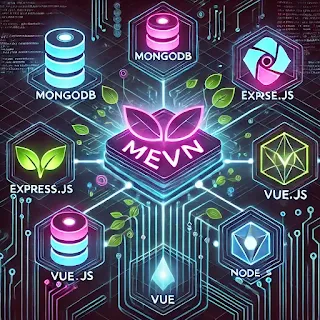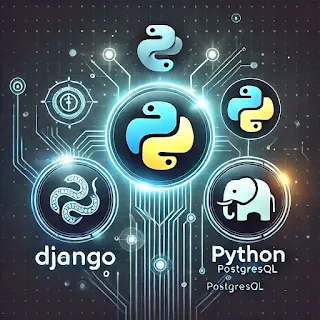Exploring Full Stack Development: Top Tech Stacks, Careers & Salaries
Introduction
Full-stack development is a high-demand skill in the tech world. It involves both front-end (client-side) and back-end (server-side) development, enabling professionals to build complete web applications. Based on technology choices, different full-stack frameworks exist. This guide explores key full-stack types, their components, and career opportunities.
1. MEAN Stack (MongoDB, Express.js, Angular, Node.js)
The MEAN stack is a JavaScript-based framework known for its efficiency and scalability.
Key Components:
- MongoDB: NoSQL database for flexible data storage.
- Express.js: Lightweight backend framework for handling requests.
- Angular: Front-end framework for interactive user interfaces.
- Node.js: Server-side runtime for executing JavaScript.
Advantages:
✅ Uses JavaScript across the stack.
✅ Scalable for cloud-based applications.
✅ Best suited for single-page applications (SPAs).
Career Paths & Salaries:
- MEAN Stack Developer: $70,000 - $130,000/year
- JavaScript Engineer: $65,000 - $120,000/year
- Web Developer: $75,000 - $140,000/year
2. MERN Stack (MongoDB, Express.js, React, Node.js)
MERN replaces Angular with React, a flexible UI library.
Key Components:
- MongoDB: NoSQL database for structured/unstructured data.
- Express.js: Framework for handling API requests.
- React: Front-end library for building modern UIs.
- Node.js: Server-side JavaScript runtime.
Advantages:
✅ React’s reusable components simplify UI design.
✅ Excellent for dynamic web applications.
✅ Strong developer community support.
Career Paths & Salaries:
- MERN Stack Developer: $75,000 - $140,000/year
- React Developer: $80,000 - $150,000/year
- Frontend Engineer: $85,000 - $155,000/year
3. LAMP Stack (Linux, Apache, MySQL, PHP/Python/Perl)
A classic web development stack known for stability and security.
Key Components:
- Linux: Open-source OS.
- Apache: Web server for hosting applications.
- MySQL: Relational database for structured data storage.
- PHP/Python/Perl: Server-side scripting languages.
Advantages:
✅ Highly customizable and open-source.
✅ Reliable for handling large-scale applications.
✅ Strong security features.
Career Paths & Salaries:
- PHP Developer: $60,000 - $110,000/year
- Python Full Stack Developer: $75,000 - $140,000/year
- Backend Engineer: $70,000 - $130,000/year
4. MEVN Stack (MongoDB, Express.js, Vue.js, Node.js)
MEVN swaps Angular or React for Vue.js, a lightweight framework.
Key Components:
- MongoDB: NoSQL database for fast data management.
- Express.js: Backend framework for building APIs.
- Vue.js: Progressive UI framework with simple syntax.
- Node.js: JavaScript runtime for backend services.
Advantages:
✅ Vue.js is lightweight and easy to learn.
✅ Ideal for single-page applications.
✅ Optimized for performance and flexibility.
Career Paths & Salaries:
- Vue.js Developer: $70,000 - $130,000/year
- MEVN Stack Developer: $75,000 - $135,000/year
- Software Developer: $75,000 - $145,000/year
5. Django Stack (Django, Python, PostgreSQL)
Django is a Python-based web framework for secure and scalable applications.
Key Components:
- Django: Backend framework following the Model-View-Template (MVT) pattern.
- Python: High-level language known for readability.
- PostgreSQL: A powerful, open-source relational database.
Advantages:
✅ Built-in security features.
✅ Ideal for complex applications.
✅ Strong developer ecosystem.
Career Paths & Salaries:
- Django Developer: $80,000 - $150,000/year
- Python Full Stack Developer: $85,000 - $160,000/year
- Backend Engineer: $85,000 - $155,000/year
6. Ruby on Rails (RoR) Stack
Ruby on Rails follows the MVC pattern for rapid application development.
Key Components:
- Ruby on Rails: Web framework optimized for productivity.
- Ruby: Dynamic language with simplified syntax.
- SQLite/PostgreSQL: Database management systems.
Advantages:
✅ Fast development cycle.
✅ Convention over configuration approach.
✅ Ideal for startups and small projects.
Career Paths & Salaries:
- Ruby on Rails Developer: $80,000 - $140,000/year
- Full Stack Web Developer: $75,000 - $145,000/year
- Software Engineer: $85,000 - $150,000/year
7. .NET Stack (Microsoft Technologies)
.NET is a Microsoft-based framework for enterprise applications.
Key Components:
- ASP.NET: Framework for building scalable web apps.
- C#: Programming language for .NET applications.
- SQL Server: Microsoft’s relational database.
Advantages:
✅ Strong enterprise support from Microsoft.
✅ High security and reliability.
✅ Suitable for large-scale corporate solutions.
Career Paths & Salaries:
- .NET Developer: $80,000 - $140,000/year
- C# Developer: $75,000 - $135,000/year
- Full Stack .NET Developer: $85,000 - $150,000/year
Conclusion
Full-stack development is an essential skill in industries such as finance, healthcare, e-commerce, and cloud computing. Companies like Google, Amazon, and Microsoft rely on full-stack engineers for scalable and robust applications. Whether you choose MEAN, MERN, Django, or .NET, learning full-stack development opens doors to exciting career opportunities in the ever-expanding tech industry.
If you're looking to enhance your web development skills, now is the perfect time to explore courses, certifications, and hands-on projects in full-stack development! 🚀






%20Stack.%20The%20image%20features%20a%20sleek%20design%20with%20a%20glowing%20Ruby%20gemst.webp)




Comments
Post a Comment
We value your insights! Share your thoughts on the latest tech trends, innovations, and reviews. Stay respectful and relevant – let's build a great tech community together!